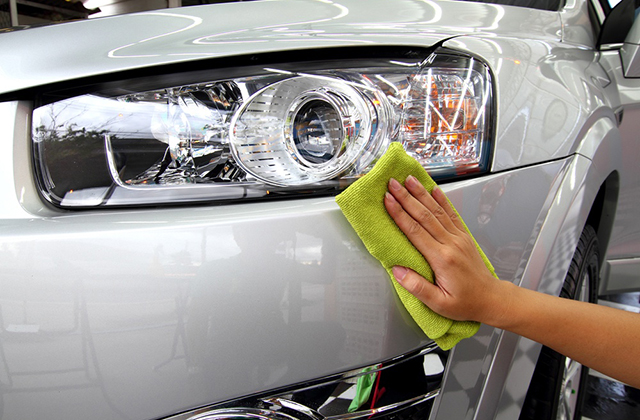Everybody wants to keep their car as shiny as possible, no doubt ceramic coating Perth will take care of it. Your brakes are without a doubt the most important safety feature on your vehicle. When they don’t work, it puts lives in danger and your vehicle literally becomes a ticking time bomb. According to the U.S. Department of Transportation Bureau of Transportation Statistics, there were 6,159,000 auto accidents reported in 2005. Of these, 2.7 million resulted in personal injuries and 43,443 fatalities. Mechanical failures (like bad brakes) are a factor in an estimated 12% to 13% of all auto accidents according to several available sources. Many of those are due to bad brakes because of a lack of proper vehicle maintenance, something that could have been prevented.
Properly functioning brakes take on the job of stopping your vehicle. When you step down on the brake pedal, your car transmits the force from your foot right to the brakes through a fluid – brake fluid. Of course, just your foot isn’t enough force to stop the vehicle, so your car multiplies the force through both mechanical advantage, also known as leverage, and hydraulic force multiplication. The brakes work to transmit the force to your tires through the process of friction. The tires also use friction against the road. There is a little more to it than this, but it can be complicated to the average driver. Most cars actually utilize two or three systems of brakes. You can see a shiny metal disc when you look through the hubcap of your front tire. That is what is known as a disc brake. When you step on the brake pedal, a pad of hard-wearing material clamps onto the brake disc and rubs it to make it slow down-in a similar way to bicycle brakes. Other vehicles may have drum brakes on the back wheels which work with a show that pushes into the wheel and friction then slows you down. No matter what type of brakes you have on your vehicle, once you start accelerating and reach a decent speed, your car has loads of energy with it. When you start to stop, that very energy is converted into heat in your brake pads. Brakes can actually heat up to temperatures of 950 degrees Fahrenheit or more. This said, brakes must be comprised of materials that won’t melt at these temperatures like alloys, ceramics or composites.
Without proper maintenance and repairs, many people don’t know that they’re driving on bad brakes. All too often, people learn only after it is too late and something significant has happened. At the first visible or audible sign of brake issues, it is recommended to get to a trusted auto repair shop. Knowing the signs and symptoms of brake problems will make you a more responsible driver. Signs of bad brakes may include but are not limited to a loud screeching noise, grinding, squealing, rubbing, vibrating, pulling, pulsating, reduced responsiveness, hard or soft brake pedal or the brake light appearing on your dashboard.
If it isn’t what you hear or feel, you should check for brake wear by looking at your brake pads through the spaces between the wheel’s spokes. The outside pad will be pressed against a metal rotor. There should be at least 1/4 inch of pad at all times. When less than 1/4 inch of pad remains, you need to have your brake pads inspected or replaced. A hydraulic system filled with brake fluid triggers a set of padded clamps known as calipers, causing them to squeeze together on a disc known as the rotor. The friction that occurs between the pads and rotor eventually stops the car. All components of a brake system are important.
Even if your rear brakes are the only ones in rough shape, it can still be dangerous. If you have to stop quickly, too much inertia could end up being deadly. You see, braking needs to be done in a balanced way, with about 70-80% of the energy being dissipated by the front brakes and sufficient remaining load on the rear tires to keep the rears under control and the car going straight. If you have no pads on the rears or less than the ¼ inch mentioned above, all of the energy has to be taken on by the fronts. If there isn’t sufficient friction on the rear brakes for the rear tires to be grabbing the pavement to ensure proper control, your front brakes and your front tires will be doing more than their share of the work which becomes dangerous and potentially deadly.
There is no universal life expectancy for brakes, brake pads, brake rotors or other braking system components. Just like your own health, habits and maintenance can have a significant impact on how many miles you get out of them. There are, of course, some things that you can do to maintain healthier brakes over time. Experts recommend that you empty your trunk and don’t overload your vehicle, don’t ride the brakes and cause unnecessary friction, try to limit stop-and-go driving, cruise with the pace of traffic, ignore your aggressive driving habits and get your brakes checked annually. Although mechanical failures are involved in only a small percentage of all auto accidents, they still represent a risk factor. In some cases, drivers who caused an accident due to faulty brakes were convicted as negligent and were liable for damages as a result of a lawsuit. You don’t want to be held accountable for something that could be prevented with proper maintain and routine checks, right? After all, the accidents that never happen are the best ones.
Good Works provides honest, professional auto repair services and stands behind every repair. Visit http://www.goodworksautorepair.com today for a complete list of services.
Article Source: https://EzineArticles.com/expert/B._Palmer/718738
Article Source: http://EzineArticles.com/9226667

